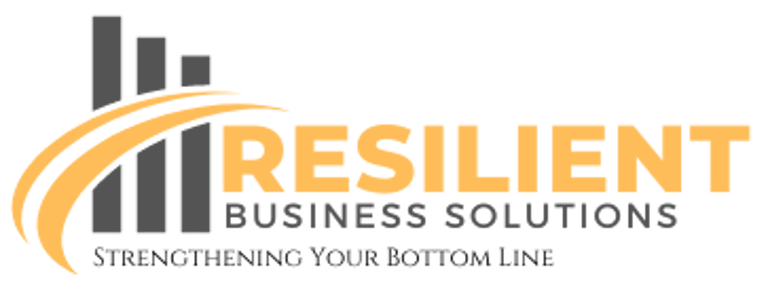Boost Your Business Growth with Effective Accounts Receivable Management
Learn why accurate accounts receivable management is essential for business growth. This post explores how managing receivables effectively improves cash flow, reduces bad debts, and enhances financial stability, providing a solid foundation for your business to thrive.
5 min read


Accounts receivable management is a crucial aspect of a business's financial operations, focusing on the processes involved in collecting payments from customers who have purchased goods or services on credit. It encompasses various activities such as invoicing, establishing credit policies, and managing incoming payments. Effective management of accounts receivable plays a pivotal role in ensuring a company's liquidity and overall financial health.
Understanding Accounts Receivable Management
At its core, accounts receivable refers to the outstanding invoices a company has issued to clients, representing money owed for products or services rendered. A well-organized accounts receivable system allows a business to keep track of what is owed to them and to ensure that the necessary follow-ups are made with clients who have not settled their invoices on time. Timely invoicing is essential in this process, as delays can shift the payment timeline, ultimately affecting cash flow and operational efficiency.
Moreover, companies must establish clear credit policies that outline the terms under which they extend credit to customers. These policies serve to mitigate risks associated with late payments or defaults, allowing businesses to balance customer acquisition with maintaining healthy cash flow. By assessing the creditworthiness of potential clients, businesses can make informed decisions regarding the extent of credit to offer, which directly influences accounts receivable management.
Additionally, effectively managing incoming payments is integral to maintaining strong accounts receivable. Strategies such as offering various payment methods, sending reminders, and efficiently handling disputes can greatly improve the collection process. By successfully managing accounts receivable, businesses not only enhance their liquidity but also contribute to their long-term growth and stability in the market. This section sets the foundation for understanding the implications of accounts receivable management on broader business performance.
Impact on Cash Flow
Effective accounts receivable management plays a critical role in maintaining a healthy cash flow for businesses. Cash flow refers to the movement of money in and out of an organization, and it is essential for meeting day-to-day operational expenses and long-term strategic goals. When a business manages its accounts receivable efficiently, it ensures that payments from customers are collected promptly. This timely collection directly contributes to a consistent cash flow, allowing the organization to cover its financial obligations without facing disruptions.
A strong receivables management strategy involves not only the collection of payments but also the timely invoicing and ongoing communication with clients regarding their outstanding balances. By streamlining these processes, businesses can reduce the time it takes for payments to be received. A shorter accounts receivable cycle allows companies to reinvest that cash back into the business, funding necessary operations, such as payroll, inventory purchases, and other expenses that drive growth. Therefore, the prompt collection of receivables is vital in fostering financial stability.
Moreover, a well-structured accounts receivable process can lead to operational efficiencies that contribute to overall cash flow improvement. By implementing techniques such as electronic invoicing, automated reminders, and detailed reporting, businesses can minimize errors and achieve faster resolution of outstanding invoices. This not only improves customer satisfaction due to timely and clear communication but also strengthens the organization’s financial footing. As cash flow remains stable, businesses are better positioned to seize growth opportunities, such as expanding product lines or entering new markets.
In conclusion, effective accounts receivable management is essential in creating a robust cash flow environment for businesses. By prioritizing swift collection of receivables and optimizing operational processes, organizations can enhance their financial stability, ultimately fostering sustainable growth.
Reducing Bad Debts and Risk
Effective accounts receivable management is essential for minimizing bad debts and mitigating risk in any business. One of the foundational strategies is conducting thorough credit assessments of customers before extending credit. This process involves evaluating a client's credit history, financial stability, and payment behavior. By establishing a clear understanding of a customer's ability to fulfill their financial obligations, businesses can make informed decisions regarding credit limits and terms.
In addition to upfront credit evaluations, it is crucial to continuously monitor customer payment patterns. Regularly reviewing accounts receivable reports enables businesses to identify trends and potential issues early on, allowing for timely intervention. For instance, if a customer begins to delay payments, it may signal deeper financial trouble or dissatisfaction with products or services. By recognizing these warning signs earlier, companies can adopt remedial measures, such as reaching out to the customer to address concerns or adjusting their credit terms.
Establishing clear payment terms is another critical aspect of reducing bad debts. Clearly spelled-out payment conditions, such as due dates, late fees, and discounts for early payments, help set expectations for customers. These terms serve not only as guidelines but also as an incentive for timely payments. When customers understand the importance of adhering to these terms, it fosters a greater sense of responsibility and compliance.
By implementing these strategies—credit assessments, monitoring payment behaviors, and clear communication of terms—companies can significantly decreasing the likelihood of bad debts. This proactive approach not only ensures a healthier cash flow but also provides predictive insights into potential risks associated with client creditworthiness. Protecting a business’s bottom line becomes much more manageable, thereby paving the way for sustained growth.
Strategies for Effective Accounts Receivable Management
To enhance accounts receivable management, businesses must adopt a multifaceted approach that incorporates technology and process optimization. One effective strategy is to leverage advanced accounting software that automates invoicing, tracks payments, and generates financial reports. This technology not only facilitates timely billing but also minimizes human errors that can lead to mismanagement of accounts receivable. Integrating such tools allows businesses to gain real-time visibility into their cash flow, enabling more informed decision-making.
Moreover, implementing robust invoicing procedures is crucial for ensuring that invoices are accurate and sent promptly. Businesses should standardize their invoicing format and utilize clear, concise language that outlines payment terms clearly. Including information such as invoice due dates, a breakdown of services provided, and payment methods accepted can significantly reduce confusion and expedite payment processes. Regularly reviewing and updating these procedures based on client feedback can further enhance their effectiveness.
Maintaining regular communication with clients is another vital aspect of effective accounts receivable management. Establishing consistent follow-ups on outstanding invoices can remind clients of their payment obligations while building a stronger relationship. Utilizing various communication channels, such as email reminders or direct calls, can increase the chances of receiving timely payments. Furthermore, fostering an open dialogue about any potential payment disputes could mitigate misunderstandings and facilitate quicker resolutions.
Lastly, setting up efficient collection processes is essential for managing late payments. Establishing clear internal guidelines for follow-ups, outlining steps to be taken if payments become overdue, and possibly incorporating early payment discounts can incentivize timely transactions. By implementing these strategies, businesses can optimize their accounts receivable management, reduce the risk of cash flow issues, and ultimately contribute to sustained growth and operational success.
As You Can See
Effective accounts receivable management is more than just tracking invoices—it's about safeguarding your business's financial health and ensuring steady cash flow. By implementing strategies like credit assessments, streamlined invoicing, proactive communication, and leveraging technology, businesses can minimize risks, reduce bad debts, and enhance overall financial stability. Properly managing accounts receivable not only helps maintain liquidity but also positions a company for sustainable growth and long-term success. Prioritizing these practices will empower your business to stay financially resilient and better equipped to navigate the ever-changing market landscape.
When You Are Ready
Ready to simplify your business operations? At Resilient Business Solutions, we’re here to take the stress out of so many of your business tasks, so you can focus on what you do best — growing your business. Whether you need help with bookkeeping, invoicing, managing payables and receivables, content creation, or a new website design, we’ve got you covered. Contact us today to learn how we can support your business with reliable, expert services. Let’s build a resilient future together!
Strengthening Your Bottom Line
Customized financial support to empower your business success.
Get Our Free 50+ Page Small Business Success Guide Now
© 2024. All rights reserved.
